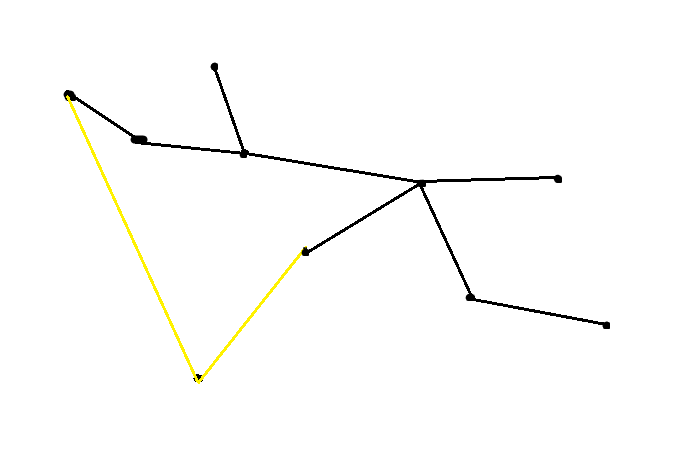题意略。
思路:
本题着重考察树的直径。如果我们将这些标记点相连,将会得到大树中的一个子树。我之前只知道树内的点到直径上两端点的距离是最远的,其实,在
整个大树中,这个性质同样适用,也即大树上任意一点,到子树中任意一点的距离,其中距离最远者必为子树直径上的端点。

如果我从子树的端点接入,那子树中的最远点必然是端点;如果我从非端点接入,那我到最远点的距离是 我到非端点的距离 + 非端点所能达到的最远点的距离
也即我到某个端点的距离。
那么我只要看任一个点到子树的两个端点的距离中最大的值,是不是小于等于d,如果是,则有可能存在鬼。
详见代码:
#include<bits/stdc++.h> #define maxn 100005 using namespace std; int n,m,d; int dist[3][maxn]; int mark[maxn]; vector<int> graph[maxn]; queue<int> que; int bfs(int num,int s){ while(que.size()) que.pop(); dist[num][s] = 0; que.push(s); int ret = -1; while(que.size()){ int temp = que.front(); que.pop(); for(int i = 0;i < graph[temp].size();++i){ int to = graph[temp][i]; if(dist[num][to] != -1) continue; dist[num][to] = dist[num][temp] + 1; if(mark[to]){ if(ret == -1 || dist[num][ret] < dist[num][to]){ ret = to; } } que.push(to); } } return ret; } int main(){ scanf("%d%d%d",&n,&m,&d); for(int i = 0;i < m;++i){ int p; scanf("%d",&p); mark[p] = 1; } int u,v; for(int i = 0;i < n - 1;++i){ scanf("%d%d",&u,&v); graph[u].push_back(v); graph[v].push_back(u); } memset(dist,-1,sizeof(dist)); int v1 = bfs(0,1); int v2 = bfs(1,v1); bfs(2,v2); int cnt = 0; for(int i = 1;i <= n;++i){ int d1 = dist[1][i],d2 = dist[2][i]; if(max(d1,d2) <= d) ++cnt; } printf("%d\n",cnt); return 0; }







 本文探讨了树的直径概念及其应用。通过分析树内任意一点到标记点子树的距离问题,得出子树直径上的端点为最远点的结论。采用广度优先搜索算法计算子树直径,并遍历所有节点来确定是否存在符合条件的点。
本文探讨了树的直径概念及其应用。通过分析树内任意一点到标记点子树的距离问题,得出子树直径上的端点为最远点的结论。采用广度优先搜索算法计算子树直径,并遍历所有节点来确定是否存在符合条件的点。
















 2229
2229

 被折叠的 条评论
为什么被折叠?
被折叠的 条评论
为什么被折叠?








